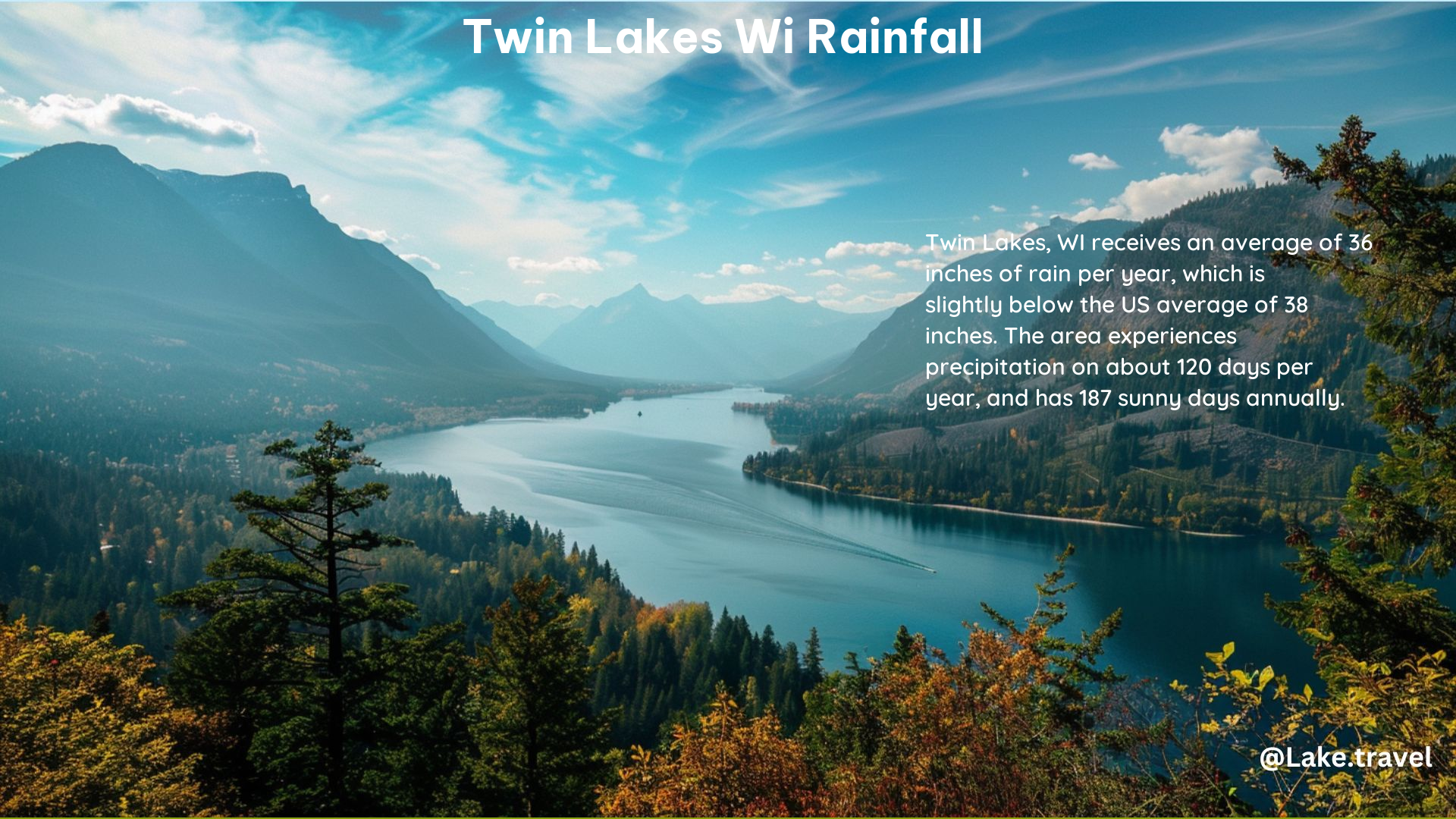The Rainfall Patterns of Twin Lakes, WI
Twin Lakes, WI receives an average of 36 inches of rain per year, which is slightly less than the US average of 38 inches. The town experiences precipitation on an average of 120 days per year, which includes rain, snow, sleet, or hail that falls to the ground and measures at least 0.01 inches. The summer high in Twin Lakes is around 83 degrees, while the winter low is 13 degrees.
Snowfall in Twin Lakes

In addition to rainfall, Twin Lakes also receives an average of 40 inches of snow per year, which is higher than the US average of 28 inches. January is the snowiest month in Twin Lakes, with an average of 12.9 inches of snowfall.
Climate Comfort Index
The annual BestPlaces Comfort Index for Twin Lakes is 6.8 (10=best), indicating that it is one of the most pleasant places in Wisconsin. It’s important to note that weather and climate are different, with weather referring to short-term atmospheric conditions and climate referring to long-term patterns.
Real-Time Precipitation Forecasts
For real-time precipitation forecasts, Weather Underground provides a 7-hour rain and snow forecast for Twin Lakes, WI, along with 24-hour rain accumulation, radar, and satellite maps of precipitation.
Historical Precipitation Data
For historical data, Weather Underground offers monthly weather history for Twin Lakes, including max, average, min, and sum precipitation values. Local Conditions provides past weather data for Twin Lakes, including rain fall totals for the Twin Lakes area and overall Kenosha county, Wisconsin.
National Weather Service Forecasts
For those planning a trip to Twin Lakes, the National Weather Service offers a detailed forecast for Twin Lakes WI, including extended forecasts and hazardous weather conditions.
Precipitation Patterns in Twin Lakes
The rainfall patterns in Twin Lakes, WI are influenced by several factors, including its location near Lake Michigan and the surrounding topography. The town experiences a humid continental climate, which is characterized by warm, humid summers and cold, snowy winters.
Seasonal Precipitation Trends
- Spring (March-May): Average rainfall of 9.5 inches
- Summer (June-August): Average rainfall of 11.2 inches
- Fall (September-November): Average rainfall of 9.1 inches
- Winter (December-February): Average rainfall of 6.2 inches
Monthly Precipitation Averages
| Month | Average Rainfall (inches) |
|---|---|
| January | 2.1 |
| February | 1.8 |
| March | 3.1 |
| April | 3.5 |
| May | 2.9 |
| June | 4.1 |
| July | 4.0 |
| August | 3.1 |
| September | 3.6 |
| October | 3.0 |
| November | 2.5 |
| December | 2.1 |
Precipitation Extremes in Twin Lakes
Twin Lakes has experienced some notable precipitation extremes over the years:
- Highest Annual Rainfall: 46.2 inches (2018)
- Lowest Annual Rainfall: 27.8 inches (2012)
- Highest Monthly Rainfall: 9.2 inches (July 2010)
- Highest Daily Rainfall: 3.8 inches (June 14, 2008)
Conclusion
Twin Lakes, WI is a picturesque destination for lakes touring enthusiasts, with a climate that offers a mix of warm, humid summers and cold, snowy winters. Understanding the rainfall patterns and precipitation trends in the area can help visitors plan their trips and make the most of their time in this beautiful part of Wisconsin.
